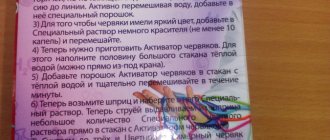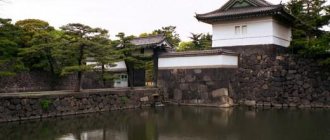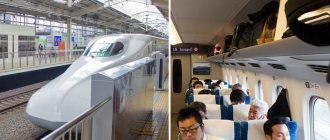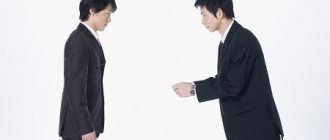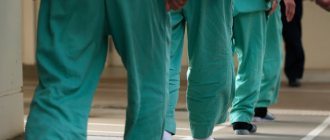On April 1, 2021, a new Order N29n of the Ministry of Health of the Russian Federation dated January 28, 2021, regulating the procedure for conducting mandatory preliminary and periodic medical examinations, comes into force. This document will replace the expired Order 302n dated April 12, 2011. The full title of the document is: “On approval of the procedure for conducting mandatory preliminary and periodic medical examinations of workers, provided for in part four of Article 213 of the Labor Code of the Russian Federation, a list of medical contraindications for carrying out work with harmful and (or) dangerous production factors, as well as work when performing who undergo mandatory preliminary and periodic medical examinations.”
Appendix 1 General requirements for preliminary and periodic medical examinations.
A preliminary medical examination is carried out in order to clarify whether the patient’s health condition is suitable for the job for which he is applying. Periodic medical examination is carried out for the purpose of:
- early detection of deterioration in health indicators under the influence of working environment factors;
- monitoring the employee’s health during work to identify occupational diseases;
- identifying the presence of contraindications to work.
Comfort Women
"Comfort Women" was the Japanese Imperial government's euphemism for the girls, teenagers and children they sold as sex slaves between 1932 and 1945 until the end of World War II. Most of the victims were Korean and Chinese, although many others were from the Philippines, Indonesia, the Netherlands, Burma, Thailand, Vietnam, Malaysia, Australia, East Timor, Hong Kong and Macau.
While some were recruited by false advertisements promising jobs as maids, factory workers and nurses, most were kidnapped and forced into sexual slavery for Japanese soldiers at government comfort stations designed to improve army morale, and as a war strategy .
An estimated 410,000 women and children were forced to become sex slaves for Japanese (then American) soldiers and officers in these government-run rape camps. According to various estimates, 300 thousand girls under 18 years of age passed through the “comfort stations”; each was raped by an average of 20-30 soldiers a day.
The calculations depend on both the estimated number of military personnel per comfort woman and the replacement rate.
A private paid an entrance ticket, which cost 5 yen; for officers and corporals, the entertainment was cheaper - only 2 yen were asked for a ticket. The operating hours of the brothels were strictly regulated, and the maximum possible time a soldier could spend with a girl was also indicated - at first it was 30 minutes, then it was reduced to 10-15.
Comfort women
The “comfort women” were often kept in inhumane conditions and suffered from hunger, physical and psychological abuse, disease, infections and rampant STDs. Monuments to “comfort women” are erected around the world to memorialize victims and their communities, and to educate new generations about the dangers of war and the global responsibility to protect human rights.
Who can conduct inspections?
Arranging medical examinations for employees is the responsibility of the employer. Preliminary and periodic medical examinations can be carried out by medical organizations licensed for this type of activity - these can be both public and private commercial centers. Examinations are carried out both at medical institutions and by visiting teams. In this case, diagnostic tests are carried out for employees in medical organizations in advance (clause 4 of the Procedure, Appendix No. 1). If necessary, medical organizations carrying out examinations can obtain information about the health status of workers in medical institutions where these workers are served on an ongoing basis (for example, this may be a clinic at their place of residence).
Suspicion of abuse
There are more than 500 children studying at an elementary school in the suburbs of the Kansai region. Up to 60 schoolchildren can contact Suzuki (all names in the article have been changed) who works in the medical office.
Monday, 8 am. Our first visitor this week is first grader Daiti. The class teacher brought him in after noticing a wound on the tip of his nose. The abrasion, about 1 centimeter in size, has already healed with a crust. Daiti explained that he fell on the stairs at home.
- It must have been painful. How long did you cry? – Suzuki asks affectionately.
- Yeah.
- When did you fall?
- ….This morning.
- Can't be. The abrasion has already begun to heal.
The boy found it difficult to answer, and Suzuki, refusing further questions, began to treat the wound.
Hearing about Daiti, the director appeared in the medical office with a camera, capturing the boy's face before the adhesive plaster was placed on his nose. In response to the director’s words, “I’ll give you this photo for graduation,” Daiti smiled, but when palpating his nose, obvious pain was reflected on his face.
This is not the first time that strange abrasions have caused a visit to the medical office, and, suspecting abuse, the school is already in contact with a special center for children’s issues. Photographs are required in case evidence of abuse is required.
Abused children may hide the truth in an effort to protect their parents, so excessive questioning has the opposite effect. The boy, delighted with the affectionate attitude, appeared in the medical office more than once, dropping strange phrases as he walked: “I bruised the same place on Saturday, it hurt,” “yesterday I went to bed at 9, got up at 3 in the morning.” Suzuki listens carefully to the child and brings incoming information to the attention of the director and other competent persons.
The procedure for conducting preliminary medical examinations (MO)
A medical examination (MO) is organized on the basis of a referral provided by the employer or his representative.
The new Order specifies a list of additional information about the employee and employer:
- Information about the organization (name of employer / contact phone number / e-mail)
- Type of activity according to OKVED
- Information about the medical organization (name / actual address / contact phone number / e-mail)
- Type of medical examination (preliminary or periodic)
- Information about the employee (full name, date of birth, gender)
- Department (if any), employee’s profession and length of service (according to clause 23 of the Procedure, Appendix No. 1)
- List of dangerous / harmful factors or type of work (in accordance with Appendix 1)
- Insurance policy number (compulsory medical insurance or voluntary medical insurance)
The referral must be signed by a representative of the organization, indicating the position and full name. It is recommended to affix the organization's seal to prevent attempts to forge the referral.
According to the new rules, a referral can be generated electronically (if an electronic signature of the employer and employee is used).
To undergo medical examinations, the following documents are required:
- direction;
- an insurance certificate of compulsory pension insurance containing the insurance number of an individual personal account (SNILS) or a document confirming registration in the individual (personalized) accounting system in the form of an electronic document or on paper;
- passport (or other standard document identifying the employee);
- decision of the medical commission that conducted a mandatory psychiatric examination (in cases provided for by the legislation of the Russian Federation). If not, we will conduct it on site;
- an extract from your personal medical record with the results of medical examination (optional).
Now you will additionally need a compulsory medical insurance/voluntary medical insurance policy. Medical examination data is valid for 1 year.
Unique specialist
Nurses appeared in school medical offices in Japan almost simultaneously with European countries. In the West, the school nurse still exists today as part of the public health system, but in Japan, nurses have been replaced by teachers - a nursing license is not required to obtain a teaching certificate. It is much easier for children to seek advice from a staff member who constantly monitors their physical and mental health than from a visiting psychologist.
The responsibilities of a medical office employee are divided into two groups - care and educational activities. The founder of NNYJ, Teikyo College professor Shishido Sumi, who began her career working in the school medical office, recalls with a smile that foreign audiences initially confused them with yoga teachers, but reacted positively. “We envy you, not being able to fully provide for the needs of children while attending school 1-2 times a week, the opportunity to combine daily care with teaching the basics of health is an ideal option. We would like to study the Japanese system,” write researchers from France, Great Britain and Canada, having familiarized themselves with this system.
Professor Shishido believes that it was his Japanese teachers who were able to find effective solutions to such global problems in the field of child health as obesity, abuse and sexually transmitted diseases, so the Japanese experience may be
useful for other countries.
What tests should be included in the examination?
The first thing the patient has to do is fill out a questionnaire to collect anamnesis (history of previous diseases), risk factors (smoking, alcohol), lifestyle (level of physical activity).
A calculation is carried out based on anthropometric (measurement of height, weight, waist circumference) body mass index.
List of required studies:
- General blood analysis.
- Analysis of urine.
- Electrocardiogram (ECG).
- Blood pressure (BP) measurement.
- Total cholesterol level.
- Blood glucose level (fasting).
- Determining the risk of developing cardiovascular diseases.
- Fluorography or radiography in two projections.
If fluorography / radiography / CT of the lungs was carried out within a year, there is no need to conduct it additionally. The results of the previous examination will need to be provided to the medical center.
They themselves wanted
In 1991, the Japanese government publicly acknowledged for the first time that "comfort stations" existed during the war. Two years later, in a statement released by the Chief Cabinet Minister, the government also admitted its involvement in the recruitment and deception of comfort women, and apologized for insulting their honor.
Although the Japanese government denied any legal responsibility for sexual assault, it created the Asian Women's Fund in 1995 as an attempt to regulate the problem. However, the Foundation was supported by donations from private citizens rather than government funds, and Korean activists opposed its existence. The fund ceased its activities in 2007.
The issue of “comfort women” remains a highly sensitive issue in Japan. Although the existence of such a program became common knowledge there, many Japanese, especially right-wing nationalists, continued to refute it, especially regarding the fact that women were forced to work in forced and uncomfortable conditions.
In 2007, Abe Shinzo, during his first term as prime minister, stated that there was no evidence of coercion . Later , , under pressure from the world community, was forced to retract his comments.
In 2013, Osaka Governor Toru Hashimoto told reporters that during the war, sexual slavery was "necessary" to maintain military discipline so Japanese soldiers could "rest" during World War II.
Hashimoto also noted that in 1945, Japan was forced to create a "Recreation and Recreation Association" from surviving sex slaves in order to divert the occupying US forces away from the civilian population. These actions markedly reduced the number of mass rapes to 330 women per day.
Hiroshima and Nagasaki. CRIME AGAINST HUMANITY. 16+
The topic resurfaced publicly in 2014, during Abe's second term as prime minister. A Japanese newspaper said it had refuted stories from the 1980s and 90s about women and children being forced into sexual slavery. Some discussion ensued among government officials about revising the 1993 apology statement, but the idea was quickly abandoned, in part due to external pressure (including from the United States).
Which specialists conduct the examination?
It is mandatory for everyone to be examined by the following specialists:
- therapist
- neurologist
- psychiatrist
- expert in narcology
- gynecologist (for women).
For persons in contact with harmful chemical, biological and physical factors, which are marked in the list with the letters “A”, “K”, “F”, “R”, as well as performing certain types of hazardous work, must undergo additional examinations from medical specialists : “A”, “K” - dermatovenerologist, otorhinolaryngologist; for "R" - surgeon. For “K”, “F” - digital radiography of the lungs is performed in two projections.
Women are examined by a gynecologist with a study of flora (bacteriological analysis) and atypical cells (cytological analysis to detect early oncology). In accordance with the new Order, ultrasound of the pelvic organs becomes mandatory. Women over 40 years old also need to undergo mammography - examination of the mammary glands (clause 12.4, clause 31.4 of the Procedure, Appendix No. 1).
They don’t save on the elderly
The most expensive item in Japan's budget (up to 30%) is health care for the elderly. This is due to the demographic situation that has developed in recent decades: Japan ranks first in the world in life expectancy (87 years for women and 80 for men). Therefore, there are more and more elderly people - and no money is spared on them. The Japanese retire at 65. Even the minimum pension does not make ends meet. In addition to this, there are many other options for support from the state: for example, before the New Year, all veterans are invited to municipalities, provided with financial assistance, given vouchers to thermal springs, and organized trips around the country and abroad. Pensioners are entitled to free rail travel, tickets to museums and other benefits. And health insurance is free for them.
"Oases of Longevity" How people in different parts of the world defeated aging
Read about it
Organization of medical examination
The employer has the right to organize a medical examination of newly hired employees and (or) an annual preventive examination to prepare documents for the formation of the final act.
The cost of services paid for during medical examinations or annual preventive examinations carried out under the compulsory medical insurance policy should not be included in the contract when conducting a preliminary medical examination. (clause 12.4, clause 31.4 of the Procedure, Appendix No. 1).
A medical examination is considered completed when the employee has passed all the declared medical specialists, laboratory and instrumental tests, or provided medical documentation on previously completed medical examinations and examinations (extract from the outpatient card).
If it is difficult to assess the results of the examination, the Person entering work/Employee, due to his or her existing diseases, is issued a certificate of the need for additional medical examination.
Information is sent to the Employer about the issuance of the certificate, and the Person entering work/Employee is considered to have FAILED the medical examination.
A professional suitability examination is carried out by a person applying for a job INDEPENDENTLY at the expense of compulsory medical insurance funds.
Additional examinations required by the employee are carried out at the expense of compulsory health insurance funds.
Extraordinary medical services are provided. examinations if medical is available. recommendations based on the results of medical examinations and/or incapacity of the employee (clause 19 of the Procedure, Appendix No. 1)
Medical registration is ALLOWED. cards in the form of an electronic document (clause 13 of the Procedure, Appendix No. 1).
Safety island
After the bell rang for class, the children in the medical office—a first-grader and a sixth-grader—opened their notebooks on mathematics and hieroglyphs and began studying. A strong feeling of anxiety does not allow them to enter the classroom, but within the walls of the office the problems recede. The medical office became a safe territory for them, free from the judgments and criticism of others. In Japan, there is a special term called hokenshitsu toko - attending school and staying exclusively in the medical room, otherwise such children simply refuse to leave the house. Often, the medical room becomes a life-saving bridge to the regular classroom.
During recess, guys keep popping in to see Suzuki because he has a bloody nose or a headache. In winter, many people come with a fever. Suzuki distributes thermometers, calls parents and immediately carries out educational work, informing his patients about the causes of colds and ways to recover quickly.
Sixth-grader Xing appeared in the office with a sluggish look and the words “It’s hard to even sit.” To the question “What do you want?” came the immediate response, “Die.”
Suzuki notes that recently children are increasingly saying two phrases - “I want to die” and “I want to start all over again.” Sin is one of them. He repeats: “I want to die.”
If something goes against his wishes, the boy may get into a fight or exhibit uncontrollable behavior. He instills fear in children, and is considered a problem child among adults. Dressed in branded clothes, Xing comes across as a spoiled brat from a wealthy family. However, communication in the medical office, where one can talk about painful topics for him, makes it possible to understand that not everything is so rosy.
What is the IVA procedure like in Japan?
After a detailed diagnosis, Dr. Kawamura proceeds with oophorectomy (ovarian resection): one ovary is removed and rapid freezing of the cortex is performed to confirm the presence of the first follicles.
The second stage is unfreezing and segmentation. After defrosting, the cortex, which was previously stored in a cryogenic chamber, is cut into small particles, which activates the primary follicle. Then the cultivation lasts for 2 days: the ovary is placed in a nutrient medium, and the maturation of the primary follicle is stimulated with the help of special substances in this medium. After 2 days, the ovarian segments are removed from the culture medium and transplanted into the fallopian tube.
The last stage of IVA is gestation in the fallopian tube. At the required interval, several sections of the ovary are placed next to the surface of the fallopian tube. The primary follicle matures into an egg, then the mature eggs are removed from the body for IVF.
The differences between the methods are as follows: with Fresh IVA, segmentation of the ovarian cortex can be performed immediately after removal, without freezing. When choosing the IVA technique with same-day transplantation, the cortex, as in Fresh IVA, is segmented immediately after resection, but is transplanted without culture.
Rewrite history
In 2014, the Abe government also asked the UN to review their 1996 report, but UN officials quickly rejected the request. In 2021, the Japanese government filed a statement in support of a lawsuit to remove a memorial to "comfort women" in suburban Los Angeles. Later that year, the mayor of Osaka, Japan, ended Osaka's relationship with sister city San Francisco after it became what activists say was the first major city to erect a memorial statue.
The Japanese government finally announced in 2015 that it would pay reparations to Korean comfort women survivors, but South Korea asked for a more serious apology. Japan then went to great lengths to demolish and blockade comfort women memorials around the world and removed mention of them from Japanese textbooks.
None of Japan's apologies were official, as none were ratified by the legislature or approved by the executive, and no laws were passed acknowledging the country's responsibility.
Views: 10,944
Share link:
- Tweet
- Share posts on Tumblr
- Telegram
- More
- by email
- Seal
Liked this:
Like
